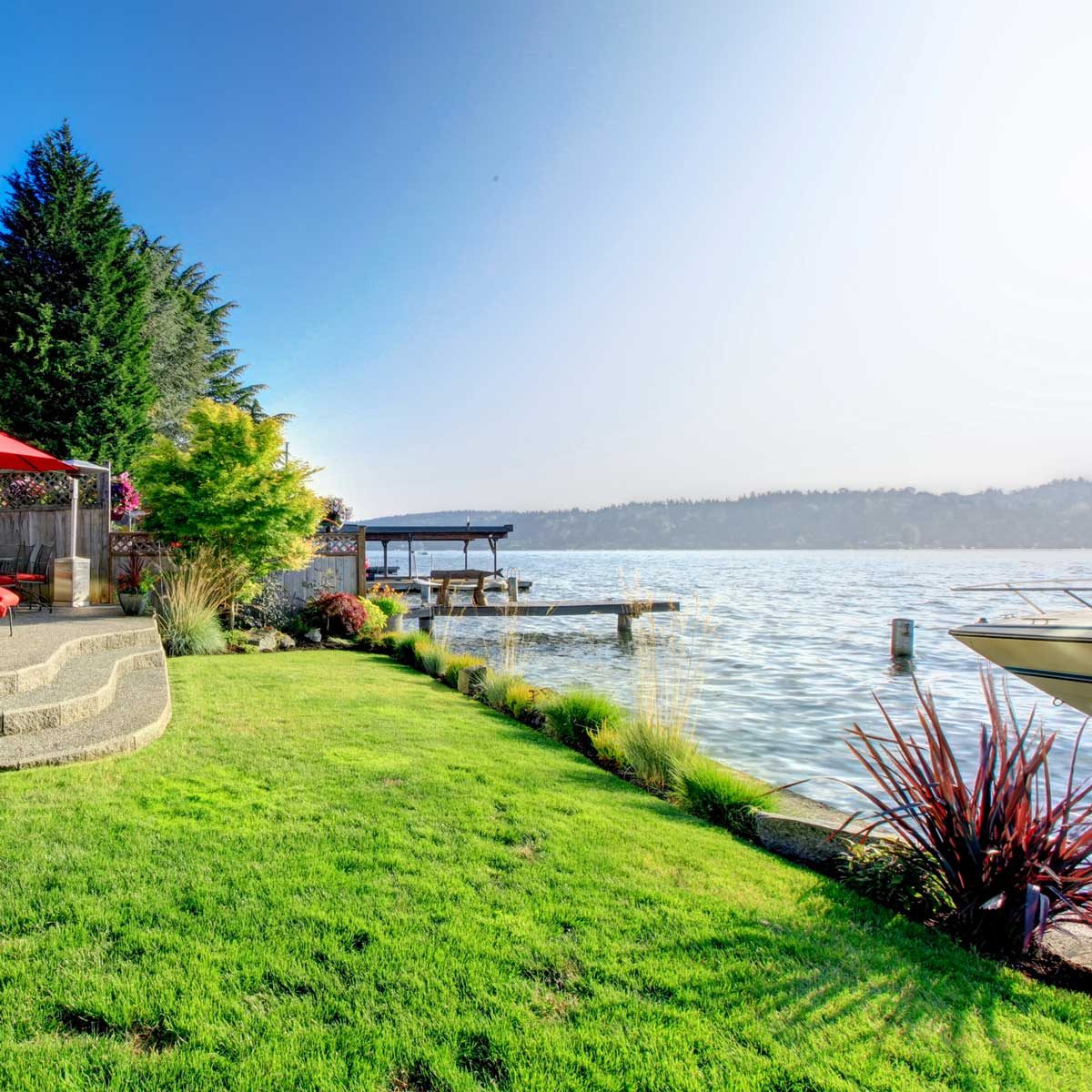
Shoreline Landscaping Design Considerations
Landscaping a waterside residence has its challenges, but it also offers some great possibilities.
Here are three key things to keep in mind:
- Ground(ing) considerations. The ground near waterways can be problematic. Low spots may retain excess water, while shale, stone or sand are more common the closer you get to the waterside. That can make planting, and keeping plants healthy, difficult.
- Focus on the view. On the bright side, you’re almost certainly working with an attractive view, which means you can show it at its best by framing it with your landscaping. Just make sure that landscaping does not end up distracting from the view of the water. Use shorter plants in front with taller plants to the sides of your primary view. And stick with colors and textures that blend in with the environment — with plants and structures.
- Consider water quality. This is vital: Lake associations often encourage property owners to create a shoreline buffer zone between their house, lawn and the shore. That’s because rain washing off a lawn or driveway can directly impact the water quality of the lake. A buffer zone filled with the right plants can filter out pollutants and soak up excess stormwater. Plants can serve as a living floodplain along a stream or river, too, absorbing water that overflows after heavy rainfalls or snow melts and can reduce erosion.
Did you miss our previous article...
https://rsssuperfeeds.com/life-hacks/50-cleaning-tips-and-tricks-that-will-make-your-home-shine






